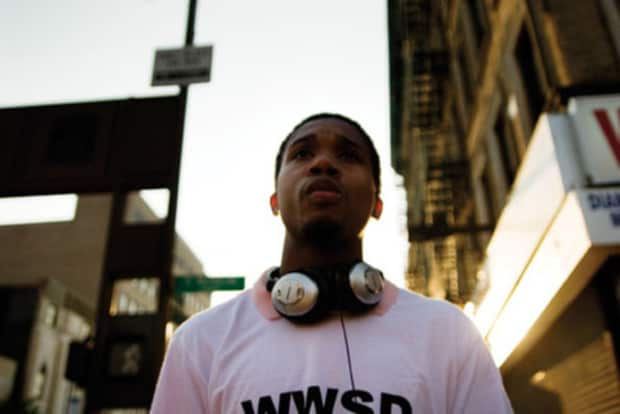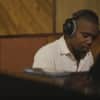After listening to Jeezy's Recession in full, we fully support any youth who wants to role-model Jay Jenkins, especially if it inspires him to make songs this good. To be fair, semantically, it should be Cheezy Hamilton, but we realize that doesn't sound so tough, and we know for a fact that Charles is a tough kid. We talked to him for FADER 56, out on newsstands shortly, and he revealed himself to be Harlem's version of Good Will Hunting. He also dropped a total gem in explaining his love for the color pink (Hint: it has to do with anatomy). Read it all after the jump and stay ready for Charles' Interscope debut coming soon.

Getting Comfortable
CHARLES HAMILTON finds a new place
Story Jesse Serwer
Photography Tiana Markova-Gold
Tons of artists have a story about the time they were so focused, they “lived” in the studio. Charles Hamilton has them all beat. After a falling out with his mother effectively made him homeless, the Harlem rapper moved into a ProTools-outfitted recording studio on the third floor of his high school, Frederick Douglass Academy. “If the janitor kicked me out, it was the park bench, cold pizza in my pocket,” says Hamilton. The situation outlasted his school career—he dropped out and got his GED when he was seventeen—and only concluded after he signed with Interscope this past March at the age of twenty.
As someone who spent untold hours alone inside of an empty NYC public school, Hamilton’s rap styles soaked up the space’s history. He talks a lot about girls and how dope he is in an easy, conversational tone that even a freshman could relate to, but he’s also unusually comfortable with experimentation and his own voice for someone his age. His side-mouthed rasp adds swagger to the female appreciation hit “Brooklyn Girls,” while he takes a deeper gait for more serious tracks like the MC Lyte-guested “Closer.” Outside Looking and Crash Landed—a pair of post-signing mixtapes (with Green Lantern and DJ Skee, respectively) that collect the best of the thousand or so tracks he recorded during his time at Frederick Douglass—reveal a diarist comfortable with putting the most personal and obscure aspects of his day-to-day life into song, albeit wittily (from “Fine”: Real talk I musta died at birth/ A root canal in the birth canal/ Try it, it hurts) and he has a talent for singing unlikely, semi-melodic hooks. He not only raps over familiar instrumentals (“No Escapin’ These Nuts” finds him taking on The Beatnuts’ “No Escapin’ This” peppered with what sounds like a Hammond B3 solo), but also crafts his own sample-based productions where he displays a soft spot for ’90s loser rock anthems by The Offspring and Staind.
Over the phone Hamilton says, “I’m more of a hippie than a Harlem nigga.” (He’s also “more of a blogger then a rapper,” and a musician “who just happens to rap.”) When I meet him for a walk around where he grew up, he points out the older Puerto Rican guys who used to protect him from the kids that chased him home from school and explains his fondness for pink polo shirts (“Pink is the color of life because pink is the color of a woman’s womb,” he says). He’s pulling for The Pink Lavalamp as the title of his debut album for Interscope, though whether they go with it or not, he’s already made an album called that. “I really don’t care about money,” he says. “Last week I was so uncomfortable in my bed, I had to go find a bench.”


